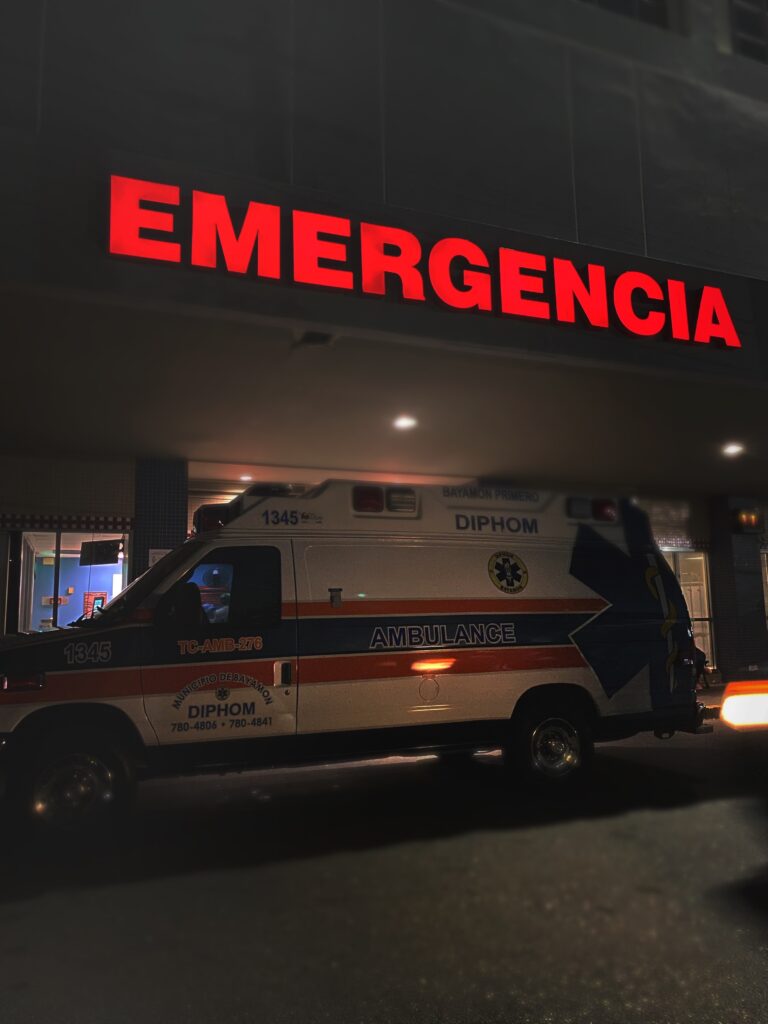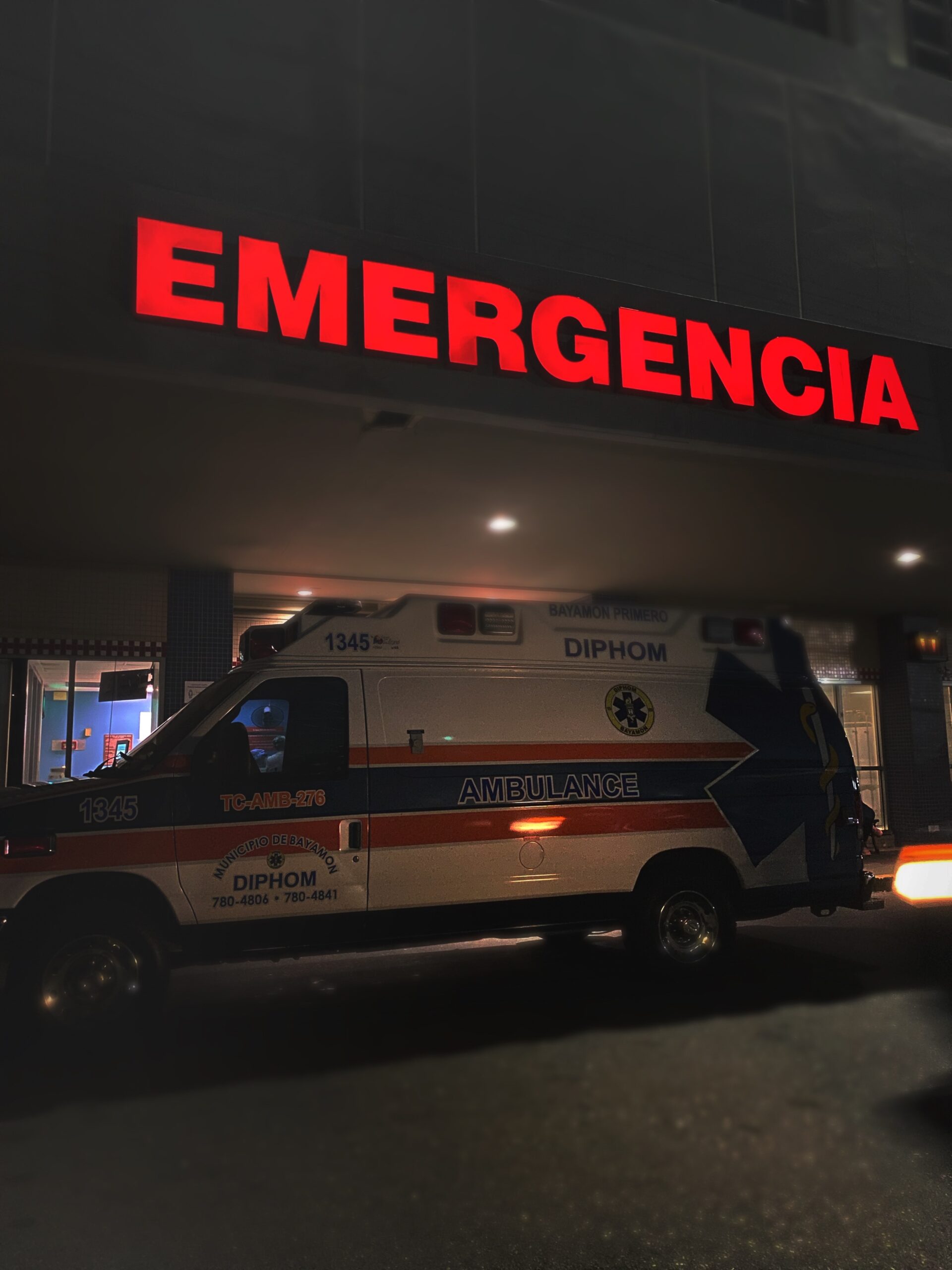Emergency Response Planning for Industrial Workshops is a comprehensive article that provides an in-depth analysis of the crucial steps and strategies involved in effectively preparing for and responding to emergencies in industrial workshops. From identifying potential hazards to establishing communication protocols and coordinating with emergency services, this article explores the essential components of a successful emergency response plan. By blending theoretical frameworks with real-world case studies, I aim to provide readers with a practical roadmap for ensuring the safety and well-being of workers in high-risk industrial environments.
Understanding the Importance of Emergency Response Planning
Emergency response planning is an essential aspect of ensuring the safety and well-being of individuals within industrial workshops. In times of crisis or emergencies, having a well-crafted emergency response plan in place can make the difference between life and death. It is crucial to recognize the need for such plans and to understand the numerous benefits they bring.
Need for emergency response plans
Industrial workshops are inherently prone to various hazards and risks. From mechanical failures to chemical spills and fires, these environments can be both unpredictable and dangerous. Without a well-developed emergency response plan, the chaos and confusion that ensue during an emergency can lead to severe consequences, including injuries, loss of property, and even loss of life.
However, with a comprehensive emergency response plan in place, organizations can effectively anticipate and mitigate risks. By identifying potential hazards, establishing protocols, and training personnel, emergency response plans enable workshops to respond swiftly and efficiently, reducing the impact of emergencies and ensuring the safety of all individuals involved.
Benefits of a well-crafted emergency response plan
Having a well-crafted emergency response plan brings numerous benefits to industrial workshops. Firstly, it allows organizations to maintain better control over emergency situations, minimizing the potential for panic and chaos. Through proper communication channels, designated emergency response teams, and clearly outlined procedures, workshops can effectively manage crises, reducing potential harm to individuals and property.
Furthermore, an emergency response plan provides a framework for effective decision-making during emergencies. By having pre-determined protocols and processes in place, organizations can ensure that actions are taken promptly and with little room for error. This enables a rapid response, enhancing the likelihood of a successful outcome.
Lastly, a well-developed emergency response plan establishes a culture of safety within the workshop. By prioritizing the well-being of individuals and incorporating ongoing training and drills, organizations demonstrate their commitment to the welfare of their employees. This fosters a sense of trust and confidence, ensuring that individuals feel safe and secure within the workplace environment.
Key Elements of an Industrial Emergency Response Plan
To effectively respond to emergencies within an industrial workshop, certain key elements must be present within the emergency response plan. These elements serve as the foundation for a well-coordinated and efficient response.
Designated emergency response team
One crucial element of an emergency response plan is the establishment of a designated emergency response team. This team consists of individuals trained and equipped to handle emergency situations effectively. The team should include individuals with a diverse set of skills and expertise, ensuring that all aspects of the emergency response are adequately addressed.
The designated emergency response team should be responsible for coordinating and executing the emergency response plan. They should be trained in various response procedures and should possess the necessary knowledge and skills to respond to a range of emergencies. Additionally, clear roles and responsibilities should be established within the team to ensure seamless collaboration and coordination.
Communication plan
Effective communication is vital during emergencies. A well-crafted emergency response plan should include a communication plan that outlines the various channels and protocols for communication within and outside the workshop. This includes establishing communication mechanisms, such as sirens and alerts, that can quickly and effectively convey critical information to all individuals within the workshop.
Furthermore, the communication plan should include the identification of key personnel responsible for disseminating information during emergencies. It is essential to ensure that these individuals are trained in effective communication techniques and capable of providing clear and concise instructions to those affected by the emergency.
Evacuation protocols
In the event of an emergency, the safety of individuals within the workshop becomes paramount. Evacuation protocols should be a key element of the emergency response plan, outlining the procedures for safely and efficiently evacuating the premises.
Evacuation protocols should include a mapped layout of exit routes and mustering points, enabling individuals to navigate their way to safety quickly. Special considerations should also be made for individuals with mobility issues, ensuring that adequate arrangements are in place to assist them during an evacuation.
Emergency equipment and facilities
To facilitate an effective emergency response, it is crucial to ensure the availability of adequate emergency equipment and facilities within the workshop. This includes maintaining well-stocked first aid kits and medical equipment to address injuries or medical emergencies that may occur during an emergency.
Additionally, workshops should have appropriate emergency firefighting equipment readily available. This includes fire extinguishers, sprinkler systems, and other firefighting tools. Regular inspections and maintenance should be conducted to ensure the functionality of this equipment.
Moreover, workshops should have designated safe shelters or assembly areas where individuals can gather during emergencies. These areas should be easily accessible and clearly marked to ensure that individuals can quickly find refuge in a secure location.



This image is property of images.unsplash.com.
Risk Assessment in the Workshop Setting
To effectively plan for emergencies within an industrial workshop, conducting a comprehensive risk assessment is crucial. A risk assessment allows organizations to identify potential hazards, evaluate their likelihood and consequences, and develop appropriate measures to mitigate these risks.
Performing a hazard analysis
The first step in performing a risk assessment is to conduct a thorough hazard analysis. This involves identifying and assessing potential hazards within the workshop setting. Hazards may include toxic chemicals, heavy machinery, electrical equipment, or other elements that pose a risk to the safety and well-being of individuals.
During a hazard analysis, workshops should assess the likelihood and severity of each identified hazard. This enables organizations to prioritize risks and allocate resources accordingly. It is essential to involve individuals with expertise in hazard identification and analysis to ensure a comprehensive evaluation.
Identifying high-risk areas and processes
In addition to identifying individual hazards, workshops should also focus on identifying high-risk areas and processes within their operations. Certain areas or processes may present an elevated risk due to various factors such as the complexity of operations, the presence of multiple hazards, or the involvement of large numbers of individuals.
By identifying high-risk areas and processes, workshops can implement targeted risk management strategies to address these specific challenges. This may include additional training, enhanced safety protocols, or the implementation of additional safety measures to mitigate the identified risks effectively.
Developing a risk register
To facilitate ongoing risk management, it is essential to develop a risk register as part of the emergency response plan. A risk register provides a systematic framework for documenting identified risks, their associated likelihood and consequence ratings, and the measures put in place to address them.
The risk register serves as a valuable reference tool for the emergency response team, ensuring that risks are continually monitored and adequately addressed. Regular updating of the risk register allows organizations to adapt their emergency response plan as necessary and ensure that mitigation strategies remain effective.
Crafting the Emergency Response Procedures
Once hazards have been identified, and risks have been assessed, it is crucial to outline specific procedures for different emergencies within the emergency response plan. These procedures provide a step-by-step guide for responding to different types of emergencies, ensuring that appropriate actions are taken promptly and effectively.
Outlining specific procedures for different emergencies
Each emergency situation requires a unique response. To effectively handle emergencies, workshops should develop specific procedures for various types of incidents they may encounter. This may include procedures for fire emergencies, chemical spills, natural disasters, medical emergencies, and other potential crises.
Each set of procedures should outline the appropriate actions to be taken, the individuals responsible for each task, and any specific equipment or resources required for response and mitigation. By tailoring procedures to the specific needs of each emergency, workshops can ensure a focused and efficient response.
Prioritizing safety in emergency procedures
When crafting emergency response procedures, the overarching priority must always be the safety of individuals within the workshop. Procedures should reflect this priority and emphasize the importance of taking immediate actions to protect lives and minimize the impact of the emergency.
Procedures should include clear guidelines for evacuating individuals, dealing with injuries or medical emergencies, containing hazardous materials, and mitigating potential threats. The comprehensive nature of these procedures should reflect the organization’s commitment to safety, ensuring that individuals affected by emergencies receive the necessary support and assistance.
Making procedures easy to understand and follow
The effectiveness of emergency response procedures relies on the ability of individuals to understand and follow them accurately. As such, it is essential to ensure that the procedures outlined in the emergency response plan are clear, concise, and accessible to all individuals within the workshop.
Procedures should be written in plain language, avoiding technical jargon or complex terminology that may impede comprehension. Visual aids, such as flowcharts or diagrams, can also be utilized to enhance understanding. Regular training and drills should be conducted to familiarize individuals with the procedures, ensuring that they can be implemented effectively during emergencies.



This image is property of images.unsplash.com.
Training the Emergency Response Team
An emergency response plan is only as effective as the individuals responsible for executing it. It is crucial, therefore, to identify appropriate team roles and responsibilities, provide comprehensive training, and conduct regular drills and exercises to ensure the emergency response team is prepared for any situation.
Identifying team roles and responsibilities
Within the emergency response team, it is essential to clearly define each member’s roles and responsibilities. This includes designating team leaders, communication coordinators, first aid responders, and individuals responsible for specific tasks or areas of expertise within the emergency response plan.
By establishing clear roles and responsibilities, organizations ensure that all aspects of the emergency response plan are adequately addressed. This reduces the likelihood of confusion or duplication of efforts during an emergency and enhances the team’s overall effectiveness.
Providing comprehensive training to the team
To ensure that the emergency response team is adequately prepared, comprehensive training is essential. Training should cover a range of topics, including emergency procedures, hazard identification and mitigation, first aid and medical response, communication techniques, and crisis management.
Training should be tailored to the specific needs of the workshop and the potential emergencies it may encounter. This may involve partnering with external experts or agencies to provide specialized training in areas such as chemical spills, fire safety, or medical emergencies.
Conducting regular drills and exercises
One of the most effective ways to prepare the emergency response team is through regular drills and exercises. These simulations allow the team to practice their response procedures, assess their effectiveness, and identify any areas that may require improvement.
Drills should be conducted for various types of emergencies to ensure that the team is well-rounded in their response capabilities. They should also be conducted at regular intervals to ensure that training is up to date and that individuals remain familiar with their responsibilities and the emergency response procedures.
Establishing Effective Communication Mechanisms
During emergencies, effective communication is crucial to ensure a swift and coordinated response. Industrial workshops should establish effective communication mechanisms as part of their emergency response plan to enable the efficient flow of information.
Use of sirens and alerts during an emergency
One effective communication mechanism during emergencies is the use of sirens and alerts. These audible signals can be easily recognized and understood, alerting individuals within the workshop to the presence of a crisis and indicating the appropriate response actions to be taken.
Sirens and alerts should be strategically placed throughout the workshop to ensure that they can be heard by all individuals. It is crucial to conduct regular tests and inspections to ensure the reliability and functionality of these communication devices.
Importance of clear, concise communication
Clear and concise communication is crucial during emergencies to avoid confusion and ensure that critical information is relayed effectively. Communication should be direct and to the point, providing individuals with the necessary information to take immediate actions.
To achieve effective communication during emergencies, it is important to train designated individuals on effective communication techniques. This includes emphasizing the importance of remaining calm, delivering the message clearly, and requesting confirmations to verify understanding.
Backup communication options
In addition to sirens and alerts, workshops should establish backup communication options to ensure that information can still be relayed in the event of technical failures or other disruptions. This may include backup radio systems, alternative phone lines, or even the use of runners to physically deliver messages.
The backup communication options should be included in the communication plan and individuals responsible for utilizing these options should be trained on their use. The availability and functionality of these backup systems should be regularly tested to ensure their reliability.



This image is property of images.unsplash.com.
Integrating Evacuation Protocols
In emergencies where evacuation is necessary, well-integrated evacuation protocols are crucial to ensure the safe and efficient evacuation of all individuals within the workshop. These protocols should be developed as part of the emergency response plan and should be regularly practiced and updated as needed.
Mapping exit routes and mustering points
A clear understanding of the workshop’s layout is essential for effective evacuation. Exit routes should be mapped and clearly marked, allowing individuals to quickly and safely navigate their way out of the workshop. Signage should be installed at regular intervals to provide clear directions during an evacuation.
Additionally, mustering points should be identified and clearly communicated to all individuals. These designated assembly areas serve as gathering points for individuals following an evacuation, enabling personnel to conduct a headcount and ensure that everyone has safely escaped the immediate danger.
Training workers on evacuation procedures
Understanding evacuation procedures is vital for all individuals within the workshop, regardless of their job role or level of responsibility. Comprehensive training programs should be implemented to ensure that workers are familiar with evacuation protocols, including the designated exit routes and mustering points.
Training should be conducted regularly to reinforce knowledge and practice procedures. This may involve conducting evacuation drills to simulate emergency situations and evaluate the effectiveness of evacuation protocols. Feedback and lessons learned from these drills should be used to refine the evacuation procedures.
Special considerations for individuals with mobility issues
During evacuations, it is essential to consider the needs of individuals with mobility issues and develop specific measures to ensure their safe evacuation. These individuals may require additional assistance or alternative evacuation routes, depending on their mobility limitations.
Organizations should establish protocols for identifying individuals with mobility issues and develop plans to accommodate their needs during emergencies. This may include assigning trained personnel to assist in their safe evacuation or implementing accessibility measures, such as ramps or elevators, to facilitate their exit from the workshop.
Provisioning Emergency Equipment and Facilities
To effectively respond to emergencies, industrial workshops must ensure the availability of necessary emergency equipment and facilities. Provisions should be made within the emergency response plan to maintain and update these resources consistently.
Keeping first aid kits and medical equipment at the ready
Within an industrial workshop, injuries and medical emergencies can occur during emergencies. As such, it is crucial to maintain first aid kits and medical equipment that are readily accessible and stocked with the necessary supplies.
First aid kits should be strategically located throughout the workshop, ensuring that they can be easily accessed in the event of an emergency. Individuals responsible for responding to medical emergencies should be trained in first aid techniques and familiar with the contents of the kits.
Maintaining emergency firefighting equipment
Industrial workshops are particularly prone to fire emergencies. As such, it is essential to ensure the availability and functionality of emergency firefighting equipment.
Fire extinguishers should be readily accessible and properly maintained to address small fires quickly. Additional firefighting equipment, such as sprinkler systems or fire blankets, should be regularly inspected to ensure their functionality. Adequate training should also be provided to the emergency response team on the effective use of firefighting equipment.
Ensuring availability of safe shelters
In certain emergency situations, individuals may need to seek refuge within designated safe shelters or assembly areas. It is crucial to ensure that these shelters are adequately equipped to provide a safe environment during emergencies.
Safe shelters should be located within close proximity to the workshop and be easily identifiable. These designated areas should be well-maintained, ensuring that they are free from hazards and capable of accommodating the number of individuals they are designed to shelter. It is essential to regularly inspect and test the shelters to confirm their suitability for use.
Review and Update the Emergency Response Plan
An emergency response plan is not a static document but a living document that requires regular review and update. Workshops should consistently evaluate the effectiveness of their emergency response plan and make necessary adjustments based on changes in workshop operations and the learnings from drills and actual incidents.
Regular review of the plan
As workshop operations evolve, it is essential to review the emergency response plan regularly. This ensures that the plan remains aligned with the current state of operations and addresses any new or evolving risks.
Regular reviews should involve key stakeholders, including members of the emergency response team, management, and other relevant personnel. Feedback should be collected regarding the plan’s effectiveness, and any necessary updates should be incorporated.
Updating the plan based on changes in workshop operations
Changes in workshop operations can impact the effectiveness of the emergency response plan. As such, it is crucial to update the plan whenever significant changes occur within the workshop, including modifications to processes, layout, or equipment.
When updating the emergency response plan, workshops should consider the potential impact of changes on emergency response procedures. This may involve reassessing risks, modifying evacuation protocols, or updating communication mechanisms to reflect new operational realities.
Incorporating learnings from drills and actual incidents
Drills and actual incidents provide valuable insights into the strengths and weaknesses of an emergency response plan. Workshops should actively incorporate learnings from these experiences into the plan to continually improve its effectiveness.
Feedback and observations collected during drills and actual incidents should be thoroughly analyzed, with identified areas for improvement incorporated into the emergency response plan. Lessons learned can help enhance response procedures, refine communication protocols, and identify opportunities for increased preparedness.
Legal and Regulatory Compliance
Industrial workshops are subject to various local and national safety regulations. It is important for workshops to understand and comply with these regulations to ensure the emergency response plan aligns with the necessary legal and regulatory requirements.
Understanding local and national safety regulations
To maintain legal compliance, workshops must have a thorough understanding of the local and national safety regulations applicable to their operations. These regulations may dictate specific requirements for emergency response planning, including the establishment of designated emergency response teams, communication protocols, and evacuation procedures.
By familiarizing themselves with these regulations, workshops can ensure that their emergency response plan addresses all the necessary requirements, minimizing the risk of non-compliance and potential penalties.
Ensuring the plan aligns with industry standards
In addition to legal compliance, workshops should also strive to align their emergency response plan with industry standards and best practices. This demonstrates a commitment to excellence in safety and ensures that the emergency response plan reflects the most up-to-date knowledge and techniques.
Industry standards may provide additional guidance and recommendations for emergency response planning within specific sectors or for specific types of emergencies. By incorporating these standards into their plan, workshops can enhance the effectiveness of their emergency response and maintain their competitiveness within the industry.
Regular audits to verify compliance
To ensure ongoing compliance with legal and regulatory requirements, workshops should conduct regular audits of their emergency response plan. These audits can assess the plan’s compliance with applicable regulations, identify any areas of non-compliance, and recommend corrective actions.
Audits should be conducted by individuals with expert knowledge of safety regulations and emergency response planning. The findings and recommendations of the audits should be documented and acted upon promptly to maintain compliance and continually improve the emergency response plan.
In conclusion, emergency response planning is a critical aspect of ensuring the safety and well-being of individuals within industrial workshops. The need for comprehensive emergency response plans arises from the inherent risks and hazards present in these environments. Well-crafted emergency response plans bring numerous benefits, including better control and decision-making during emergencies and the establishment of a safety-oriented culture.
To develop an effective emergency response plan, workshops must consider key elements such as designated emergency response teams, communication plans, evacuation protocols, and the provision of necessary emergency equipment and facilities. Risk assessment plays a vital role in identifying potential hazards and developing targeted risk management strategies. Crafting specific emergency response procedures, training the response team, establishing effective communication mechanisms, integrating evacuation protocols, provisioning emergency equipment and facilities, and regularly reviewing and updating the plan are crucial aspects of emergency response planning.
Compliance with legal and regulatory requirements, as well as alignment with industry standards, ensures that the emergency response plan meets the necessary standards of safety. Through regular audits, workshops can verify their compliance and make continuous improvements.
Ultimately, a well-developed emergency response plan contributes to a safer and more secure environment within industrial workshops, protecting the lives and well-being of all individuals involved.
